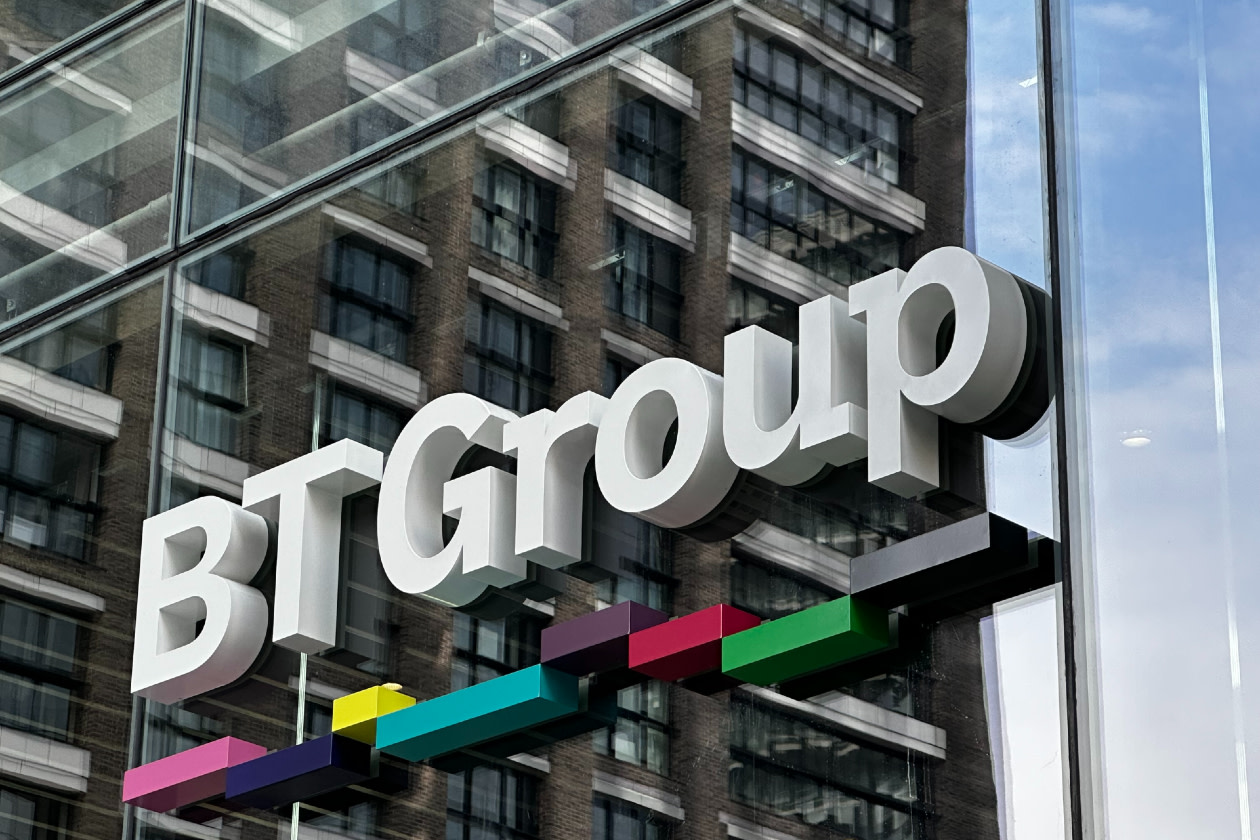BT reported a 3% drop in half-year underlying revenue to £9.8bn. Weakness in the Consumer and International segments was steadied by a flat performance from Openreach, despite the latter seeing line losses of 242,000 (221,000 expected).
Underlying cash profits (EBITDA) were flat at £4.1bn, with cost savings and efficiency measures balancing revenue pressure.
Underlying free cash flow fell sharply, down 43% to £408mn, hit by higher capital spending and less favourable cash flow timings. Net debt rose from £19.8bn to £20.9bn over the first half.
Guidance was unchanged and BT expects underlying revenue of around £20bn and EBITDA in the £8.2–8.3bn range, with free cash flow of about £1.5bn.
An interim dividend of 2.45p per share was declared, up 2% on last year.
The shares were broadly flat in early trading.
Our view
BT delivered a mixed set of first-half numbers. Guidance for the year stayed intact, yet the re-acceleration in legacy broadband line losses points to a market under pressure as rivals step up their game.
The wider strategy involves significantly modernising and simplifying operations and product lines. That includes moving all mobile products under the EE brand and migrating customers to the new 5G and fibre broadband networks, which have lower running costs than legacy infrastructure. Fewer repairs have also helped boost profits.
Cost cuts remain a long-term focus, with a further benefit coming from reduced investment now that peak spending on the massive infrastructure buildout has passed. That’s good news for future cash flows, once the infrastructure is built and widely adopted, a much leaner operation is needed to drive long-term growth.
The asset we’re most excited about is Openreach, which is responsible for maintaining and building the new fibre networks. It hopes to reach 25mn premises by the end of 2026 and looks well on track.
This technical-heavy business is unique and higher margin. New fibre connections are growing nicely, but legacy broadband lines still make up the bulk of its connections and increased competition from alternative networks, along with a softer market, are causing Openreach to lose customers. At current rates, fibre customer numbers won’t catch up to legacy broadband until 2029, so the old tech is still key.
The Business division had a steady quarter but has been a drag for some time. Structural changes, rising costs, and a tough competitive landscape make it a difficult area to operate in. Cash flow margins also lag well behind those of the Consumer and Openreach units. We’d like to see BT explore options to exit some of the underperforming operations outside the UK - one to watch.
A major drain on cash is BT's large pension deficit. The current payment plan, which aims to remove the deficit by 2030, costing around £800mn a year. Add to that the debt and lease pile, which cost another £1.7bn to service last year, and the total drags on cash are hefty.
BT’s future relies heavily on getting through this major buildout phase, and to its credit, progress looks good. We think BT is one of the better-placed names in the sector, but earnings growth is expected to be hard to find for the next few years, and we think upside could be limited.
Environmental, social and governance (ESG) risk
The telecom industry is low/medium in terms of ESG risk. Data privacy and security is the most significant risk driver, not only because customers are increasingly concerned about privacy, but also because cybersecurity breaches can be costly. Product quality is another key risk, particularly given the networks they manage are considered critical infrastructure. Carbon emissions, human capital and business ethics are also risks worth monitoring.
According to Sustainalytics, BT’s overall management of material ESG issues is strong.
BT follows strict security measures to protect personal data and has 3,600 cybersecurity employees. Greenhouse gas reduction policies are strong, including net zero alignment, emissions reduction coverage, audits and verification. BT scores well on board structure, shareholder rights, remuneration, audit and financial systems, and stakeholder governance.
BT key facts
All ratios are sourced from LSEG Datastream, based on previous day’s closing values. Please remember yields are variable and not a reliable indicator of future income. Keep in mind key figures shouldn’t be looked at on their own – it’s important to understand the big picture.
This article is original Hargreaves Lansdown content, published by Hargreaves Lansdown. It was correct as at the date of publication, and our views may have changed since then. Unless otherwise stated estimates, including prospective yields, are a consensus of analyst forecasts provided by LSEG. These estimates are not a reliable indicator of future performance. Yields are variable and not guaranteed. Investments rise and fall in value so investors could make a loss.
This article is not advice or a recommendation to buy, sell or hold any investment. No view is given on the present or future value or price of any investment, and investors should form their own view on any proposed investment.


